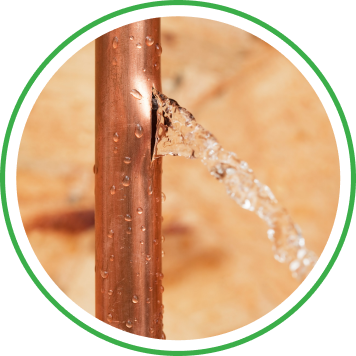Professional pipe lining in Burien, WA, can reduce groundwater contamination and fix plumbing problems at your home. This method of pipe repair uses a specialized solution to fix existing cracks in your sewer line. Rush Plumbing Inc and our Burien plumbing experts are here to answer all your questions and help with all your household sewer line needs.
Pipe Lining in Burien, WA
Plumbing Repair

The Pipe Relining Process
Traditionally, whenever you have a problem with your sewer line, the old sewer line must be dug up completely. This requires extensive excavation that can be quite costly, to say the least. Fortunately, pipe relining service can be a great trenchless sewer repair alternative. When your sewer line develops cracks and leaks, you don’t have to worry about getting a whole new sewer line. Rather, pipe lining offers an affordable alternative. There are two styles of lining that can be installed in your existing sewer line: cured-in-place pipe (CIPP) or slip liners.
CIPP is a very popular method that uses a specialized lining material that’s pulled through your existing sewer line to cover up any imperfections. Once in place, the liner undergoes expansion using special tools so that it can adhere to the pipe’s inner walls. As the epoxy-like resin adheres to the walls, it fills in any cracks and holes. This helps to restore the structural integrity of your sewer line without actually having to replace the entire line. CIPP lining can be applied to all different types of piping materials. Some of the most common include PVC, galvanized steel, and cast iron.
Unfortunately, this form of trenchless sewer repair service cannot be successful on pipes that have collapsed. It requires piping that is still in its original position, so the new lining has a surface to adhere to. With CIPP lining, only a small hole needs to be dug to successfully introduce the new lining into your existing sewer pipe. If damage is too extensive, we will suggest other options.
- Long-lasting solution
- No landscape damage
- Quick repair process
- Highly affordable
- Root intrusion-resistant

Pipe Lining Experts in Burien
Rush Plumbing Inc is your hometown pipe relining expert serving the Burien community. With over 30 years of industry experience, we have the know-how and professionalism to handle all your plumbing needs. We strive to make every service hassle-free and consistently provide our customers with clear, upfront pricing. We’re proud to be a locally owned business that is BBB-accredited with an A+ rating. We’re even a member of the PHCC.
If you need professional pipe lining in Burien, call the plumbing experts at Rush Plumbing Inc today.
Don't Freak!
©2025 Rush Plumbing Inc. All Rights Reserved.
Privacy Policy.
This site is protected by reCAPTCHA and the Google Privacy Policy and Google Terms of Service apply.
Web Design and Internet Marketing by RYNO Strategic Solutions